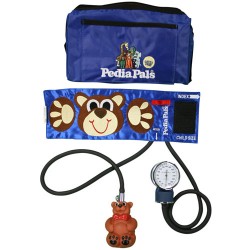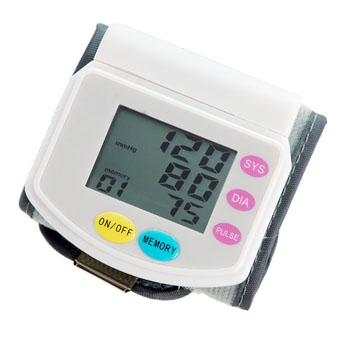Categories
How to Choose Pediatric Blood Pressure Monitor

Contents
The Importance of Kids’ Blood Pressure Control
High blood pressure or hypertension does not occur in adulthood only. More and more children are suffering from this disease. In many cases it is caused by obesity. It is vital to control child’s pressure because in future hypertension can even cause heart disease and stroke.
There are two methods of blood pressure measurement: invasive and non-invasive. The most accurate way is invasive. It is conducted by means of intra-arterial catheterization. However, you cannot do it at home yourself, so it is used under doctor’s supervision only. Non-invasive methods are more common because all you need is a blood pressure monitor.
You can see our new article – best blood pressure monitors.
Types of Monitors
One of the oldest and most widely-used monitors is a mercury sphygmomanometer. It has a cuff, a mechanical bulb, a valve, a stethoscope, and a glass tube filled with mercury. Inflating is done with mechanical bulb, while deflating is conducted through the valve. If the tube with mercury breaks, the leakage can be hazardous, as the liquid is toxic. However, newer sphygmomanometers do not spill mercury when they are broken.
Aneroid blood pressure monitors have a round monitor that replaces the mercury-filled tube. A metal spring shows the readings on the dial.
Digital pediatric blood pressure monitors are the newest and easy-to-use devices. They can be semi-automatic and automatic. When you use a semi-automatic monitor, you have to do the inflation manually. The deflation is automatic. Fully automatic blood pressure monitors are more popular.
Automatic Pediatric Blood Pressure Monitor

Automatic blood pressure monitor can measure diastolic, systolic pressure and pulse. It is inflated and deflated automatically, and the inflation level is determined automatically. The inbuilt LCD screen gives the readings, and you do not need a stethoscope. Some devices have memory that recalls last 20-30 readings for several people. However, if your body is at a specific position, or you have an irregular heart rate, the readings might be false. Pediatric intensive care units as well as Neonatal Intensive Care Units use this type of pediatric blood pressure monitors.
There also wrist and finger blood pressure monitors. The wrist one is used around the wrist, and the readings are shown on the screen. If you use a finger blood pressure monitor, insert your index finger into adjustable cuff. It may be problematic to measure small child’s blood pressure using this kind of monitor due to frequent moves the child makes. These types of monitors are sensitive to body temperature and movements.
While choosing the proper blood pressure monitor for your child, pay attention to the cuff size. It has to be neither bigger nor smaller as it could show false readings. It must cover two-third the length of the arm. Automatic blood pressure monitors are the most user-friendly, but take into account that your child has to keep the right body position and have normal temperature.



